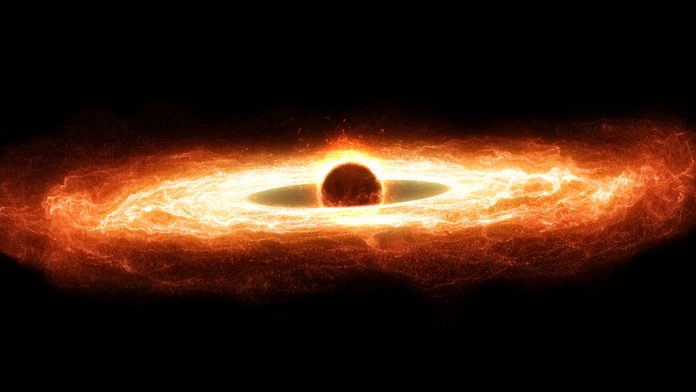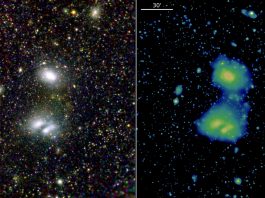Evidence from the first confirmed heartbeat of a supermassive black hole is still detectable, over ten years since its first discovery.
After years of its signal being blocked by our Sun, an international research team used X-ray satellites to observe the heartbeat of a supermassive black hole.
Research teams from the National Astronomical Observatories, Chinese Academy of Sciences, China, and Durham University, UK, indicate that this is the most long lived heartbeat of a supermassive black hole.
What is the heartbeat of a black hole?
The supermassive black hole’s heartbeat was first detected in 2007 at the centre of a galaxy called RE J1034+396 which is approximately 600 million light years from Earth. Research indicates that the signal from this supermassive black hole repeated every hour.
In 2018 the European Space Agency’s XMM-Newton X-ray satellite was able to finally re-observe the black hole and the same repeated heartbeat could still be seen. Matter falling on to a supermassive black hole as it feeds from the accretion disc of material surrounding it releases an enormous amount of power from a comparatively tiny region of space, but this is rarely seen as a specific repeatable pattern like a heartbeat.
What can we learn from this heartbeat?
The time between beats can allow researchers to predict the size and structure of the matter close to the black hole’s event horizon. Professor Chris Done of Durham University’s Centre for Extragalactic Astronomy, Professor Done said: “The main idea for how this heartbeat is formed is that the inner parts of the accretion disc are expanding and contracting.
“The only other system we know which seems to do the same thing is a 100,000 times smaller stellar-mass black hole in our Milky Way, fed by a binary companion star, with correspondingly smaller luminosities and timescales. This shows us that simple scalings with black hole mass work even for the rarest types of behaviour.”









